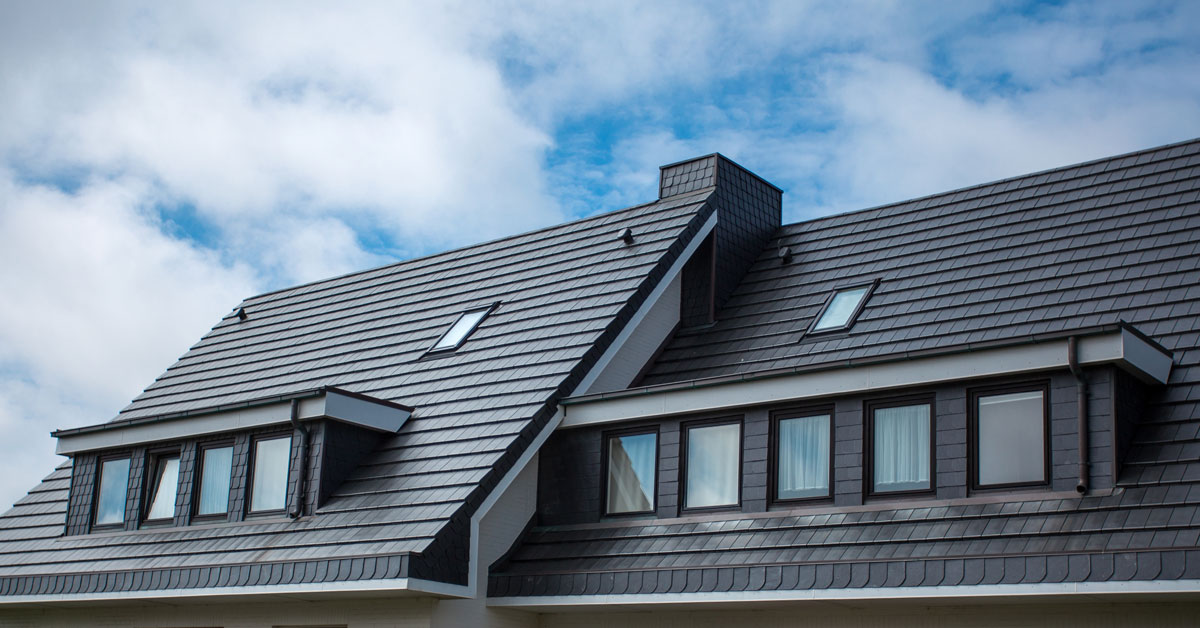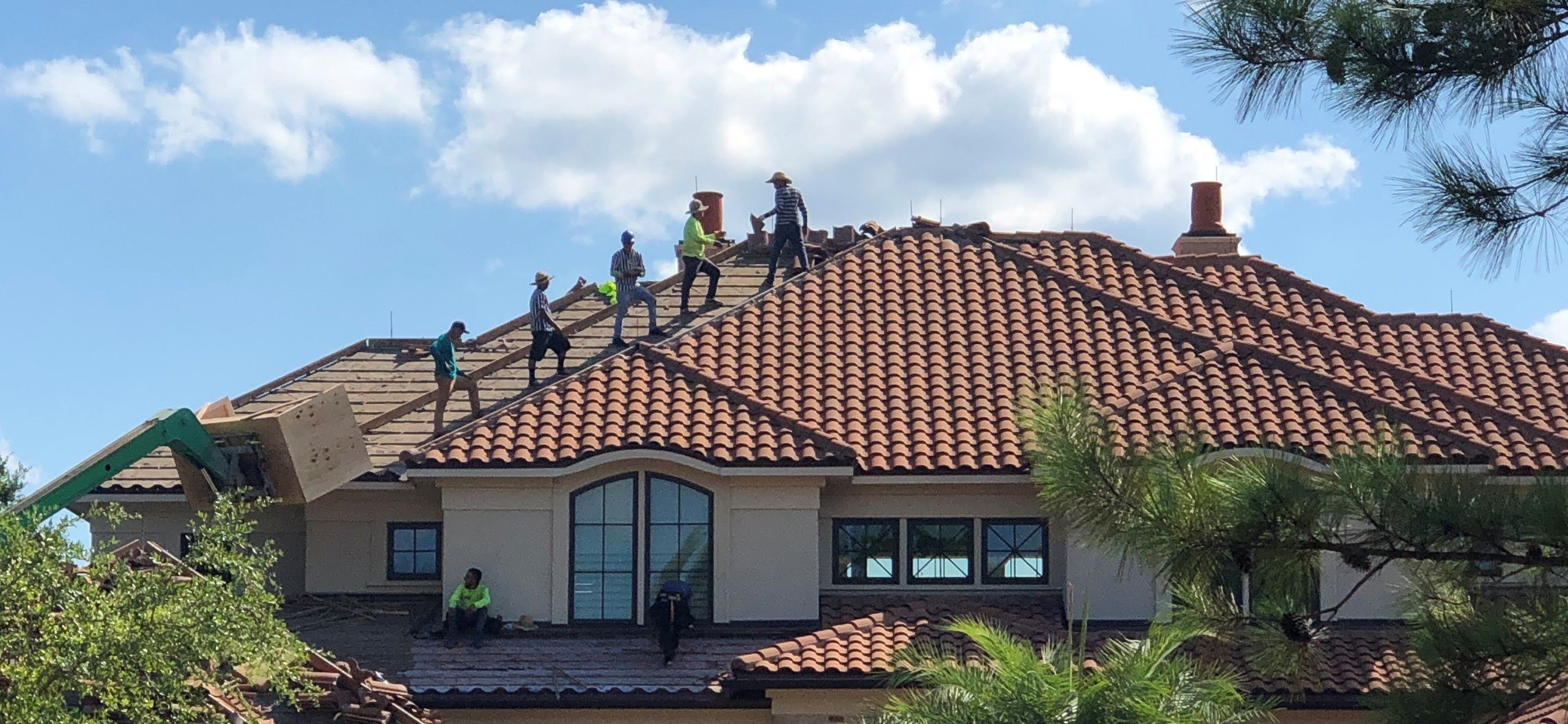Regional Insights on Roofing Companies Gainesville Florida Homeowners Prefer
Regional Insights on Roofing Companies Gainesville Florida Homeowners Prefer
Blog Article
Ideal Practices for Ensuring Appropriate Roofing Ventilation
Guaranteeing appropriate roofing air flow is vital for the longevity and performance of a roof covering system. A well balanced intake and exhaust air vent ratio, generally 1:300, plays a critical function, with intake vents ideally put at the lower side of the roofing for amazing air entry and exhaust vents at the height for cozy air leave. Normal inspections to identify clogs and maintain clear airflow are extremely important. Maintaining insulation away from vents is vital to protect against airflow limitation. Understanding these fundamental components establishes the stage for more thorough insights into installation and maintenance methods that can substantially boost your roof's efficiency.
Understand Air Flow Fundamentals
Properly understanding ventilation basics is necessary for ensuring the longevity and efficiency of roof. Effective ventilation mitigates wetness buildup and temperature extremes in the attic, both of which can cause substantial structural damages with time. A well-ventilated roofing aids in stopping usual problems such as mold and mildew growth, timber rot, and ice dams, which can endanger the stability of the roofing products and the underlying structures.
The primary objective of air flow is to facilitate the movement of air, permitting a regular exchange in between the outside and indoor atmospheres. This equilibrium is accomplished via a mix of consumption and exhaust vents that interact to maintain optimum airflow. Intake vents, normally situated along the soffits or eaves, enable fresh air to get in the attic room space, while exhaust vents, often located at or near the roof covering ridge, make it possible for warm, humid air to run away.
Key elements affecting the efficiency of roofing system air flow consist of proper placement, adequate sizing, and ensuring that both consumption and exhaust vents are unhampered. Normal evaluation and upkeep are critical to recognize possible clogs, damage, or inadequacies in the air flow system, thus safeguarding the roof covering's efficiency and longevity.
Kinds Of Roofing Vents
Roof covering vents play a vital role in preserving reliable attic room ventilation and, by expansion, the general wellness of the roofing system. Numerous kinds of roof covering vents are readily available, each with one-of-a-kind benefits customized to specific roofing needs.

Soffit vents are mounted under the eaves and job in tandem with roof vents to guarantee a balanced intake and exhaust system. By allowing cooler air to enter from below, soffit vents promote the expulsion of hot air via top vents. Gable vents, located on the exterior wall surfaces of the attic, deal another reliable option, especially in homes with gable roof coverings.
Assess Your Present Ventilation

Next, take into consideration the age and condition of your roof covering products and ventilation parts. Older systems might not adhere to current building ordinance or may have deteriorated with time, decreasing their efficiency. Conduct a complete assessment to identify any type of indicators of damage, such as corrosion, damage, or spaces that can compromise the system's efficiency.
In addition, gauge the attic room temperature and moisture levels. Heats and humidity can show insufficient air flow - roofing companies gainesville florida. Utilize a hygrometer and thermometer to get exact readings, contrasting them with exterior problems. Consistent inconsistencies recommend prospective problems that require attending to.
Installation Best Practices
Effective installation of roofing air flow systems is paramount for guaranteeing optimum performance and long life. Correct setup begins with understanding the details air flow requirements of the building and the roof covering it covers. This includes calculating the correct ratio of consumption to wear down vents, generally adhering to the 1:300 guideline, which specifies one square foot of ventilation for every 300 square feet of attic room flooring area.

Consumption vents must be mounted at the roofing's lower edge, usually in the soffits, to permit awesome air to go into. Exhaust vents, on the various other hand, need to be mounted near or at the roof's peak to facilitate the exit of warm, wet air.
Seal all vent connections thoroughly to avoid air leaks and potential water seepage. Usage high-grade materials and comply with maker standards to make certain toughness and effectiveness. Additionally, integrating ridge vents with baffles can considerably improve air movement performance by preventing wind-driven rain and snow from going into the attic.
Eventually, precise installment of roof air flow systems alleviates possible problems such as mold and mildew growth, ice dams, and architectural damages, guaranteeing the roof's stability and the building's general health.
Routine Upkeep Tips
Consistency in upkeep techniques is basic to making certain the long-lasting efficiency of roof covering ventilation systems. Throughout these inspections, make certain that vents are cost-free of particles, nests, and other obstructions that can hinder air flow.
Utilize a soft brush or a vacuum cleaner to remove dirt and debris from intake and exhaust vents. Be cautious not to harm the vent displays or louvers throughout the procedure.
Proper insulation is similarly important. Make certain that attic room insulation does not block the vents, as this can severely restrict air flow. If any type of insulation has changed or resolved, reposition or replace it to maintain an effective barrier.
Finally, replace any kind have a peek here of harmed or missing elements promptly. Damaged vents, fractured roof shingles, or shabby blinking can all add to insufficient ventilation and must be addressed right away. Routine maintenance makes sure that the roof ventilation system works ideally, therefore extending the life expectancy of the roof itself.
Conclusion
Making certain proper roof covering air look these up flow is vital for keeping the effectiveness and toughness of a roof. Adherence to the 1:300 consumption and exhaust vent proportion, coupled with the calculated positioning of vents, is crucial. Normal biannual inspections, debris cleansing, and making sure insulation does not block air flow are essential methods. Implementing these best methods will promote a well-ventilated roof covering system, consequently alleviating possible issues associated to moisture build-up and extreme warmth, eventually prolonging the roof covering's life expectancy.
A balanced consumption and exhaust air vent ratio, frequently 1:300, plays a critical duty, with intake vents ideally positioned at the reduced edge of the roofing system for trendy air access and exhaust vents at the peak for warm air exit. Consumption vents, normally situated along the eaves or soffits, permit fresh air to enter the attic space, while exhaust vents, often situated at or near the roofing system ridge, allow warm, humid air to run away.
Soffit vents are mounted under the eaves and work in tandem with roof vents to make sure a balanced intake and exhaust system. By permitting cooler air i thought about this to go into from below, soffit vents promote the expulsion of warm air through top vents. Adherence to the 1:300 consumption and exhaust vent proportion, paired with the tactical placement of vents, is important.
Report this page